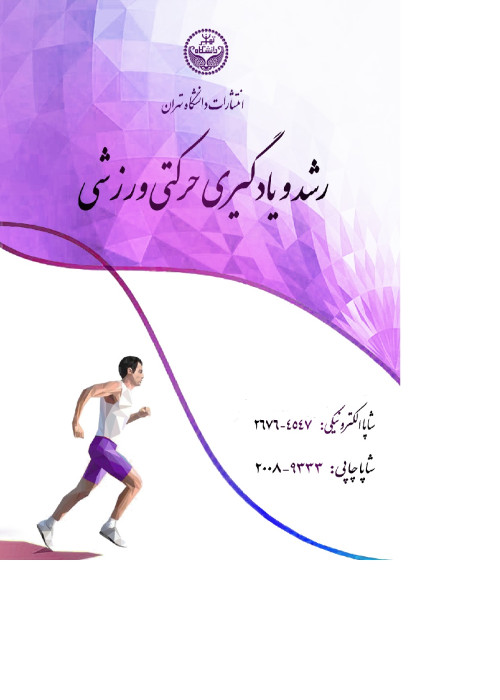The Comparison of Self-Control and Experimental-Control Feedback Frequencies on Learning a Throwing Task in Children with Cerebral Palsy
Author(s):
Abstract:
Cerebral palsy is a term commonly used for conditions characterized by motor dysfunction due to non-progressive brain damage in early life. The aim of this study was to compare the effects of self-control and experimental-control feedback frequencies on the acquisition، retention and transfer of a throwing task in children with spastic cerebral palsy. From 1750 students with cerebral palsy in Tehran special schools، 30 children (7-12 years old) with spastic hemiplegic cerebral palsy (SHCP) were selected by a convenience sampling method. A pretest consisting of 10 trials was performed to homogenize the participants. Participants were randomly divided into three self-control groups (with 25%، 50% and 75% feedback frequencies) and three experimental-control groups (with 25%، 50% and 75% feedback frequencies) in acquisition، retention، and transfer phases. In the acquisition phase، subjects completed 10 blocks of 8 trials (total of 80 trials). Retention and transfer phases were conducted 24 hours after the acquisition phase. These phases consisted of 10 trials without feedback، except that the subjects performed the transfer phase from 4m distance (vs. 3m distance in acquisition and retention phases). One-way ANOVA test showed no significant difference between the groups receiving the same frequencies (self-control and experimental-control groups) in the acquisition phase while self-control group outperformed in retention and transfer phases. Furthermore، participants who received higher feedback frequencies (self-control or experimental-control group) outperformed those in lower feedback frequencies in all acquisition، retention، and transfer phases. Thus، while the advantages of self-control feedback against experimental-control feedback were observed in the same feedback frequencies، it seems that children use feedbacks in a manner different from adults during motor learning. Thus children may require higher feedback frequencies than adults in order to optimize their motor learning.
Keywords:
Language:
Persian
Published:
Journal of Sports and Motor Development and Learning, Volume:6 Issue: 17, 2014
Pages:
271 to 292
magiran.com/p1327046
دانلود و مطالعه متن این مقاله با یکی از روشهای زیر امکان پذیر است:
اشتراک شخصی
با عضویت و پرداخت آنلاین حق اشتراک یکساله به مبلغ 1,390,000ريال میتوانید 70 عنوان مطلب دانلود کنید!
اشتراک سازمانی
به کتابخانه دانشگاه یا محل کار خود پیشنهاد کنید تا اشتراک سازمانی این پایگاه را برای دسترسی نامحدود همه کاربران به متن مطالب تهیه نمایند!
توجه!
- حق عضویت دریافتی صرف حمایت از نشریات عضو و نگهداری، تکمیل و توسعه مگیران میشود.
- پرداخت حق اشتراک و دانلود مقالات اجازه بازنشر آن در سایر رسانههای چاپی و دیجیتال را به کاربر نمیدهد.
دسترسی سراسری کاربران دانشگاه پیام نور!
اعضای هیئت علمی و دانشجویان دانشگاه پیام نور در سراسر کشور، در صورت ثبت نام با ایمیل دانشگاهی، تا پایان فروردین ماه 1403 به مقالات سایت دسترسی خواهند داشت!
In order to view content subscription is required
Personal subscription
Subscribe magiran.com for 70 € euros via PayPal and download 70 articles during a year.
Organization subscription
Please contact us to subscribe your university or library for unlimited access!


